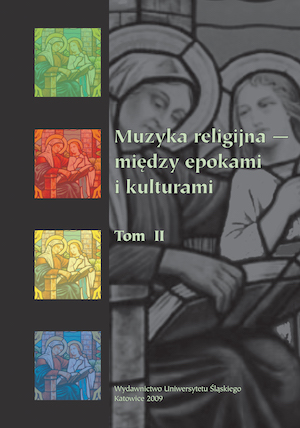Jana Długosza Teoria muzyki w liczbach
The theory of music by Jan Długosz in numbers
Author(s): Stanisław SJ Ziemiański
Subject(s): Music
Published by: Wydawnictwo Uniwersytetu Śląskiego
Summary/Abstract: The article presents the work by Jan Długosz, Jesuit (1901—1981), left out in the form ofthe manuscript, 137 A5 pages (apart from pages 117—124). In his deliberations, J. Długoszstarts from a Pitagorian mathematical scale, composed of seven intervals. He uses it in orderto investigate the ultimate basis of music. More specifically, he makes use of the theory of se-quences and combinations. In this way, Długosz wants to find an objective basis for subjec-tive feelings. He claims that it is just the latter that contains intervals, and bigger intervalsare created by means of composing the smaller ones. This composition is expressed in themultiplication of number relations. Długosz conducted a kind of interval calculation creatingthe whole table of its constituents: quints, thirds, seconds and halftones. Next, he introducesthe method of a mathematical discovery of top and down consonances. Using number rela-tions, he constructs all possible scales within an octave. He admits that each minor scale isa contraposition of a given major scale. Except for that, he differentiates complex frommixed scales. The former cover both major and minor features. Further on, he ponders overthe problem of tempered scales. In Chapter VII, he discusses unison and pause scales. Allthese considerations are theoretical in nature. Though, they allow for an explanation of men-tal feelings: cheerful and cheerless moods, as well as the phenomenon of pentatonics, com-mon to many folk cultures.
Book: Muzyka religijna – między epokami i kulturami. T. 2
- Page Range: 278-289
- Page Count: 12
- Publication Year: 2009
- Language: Polish
- Content File-PDF

